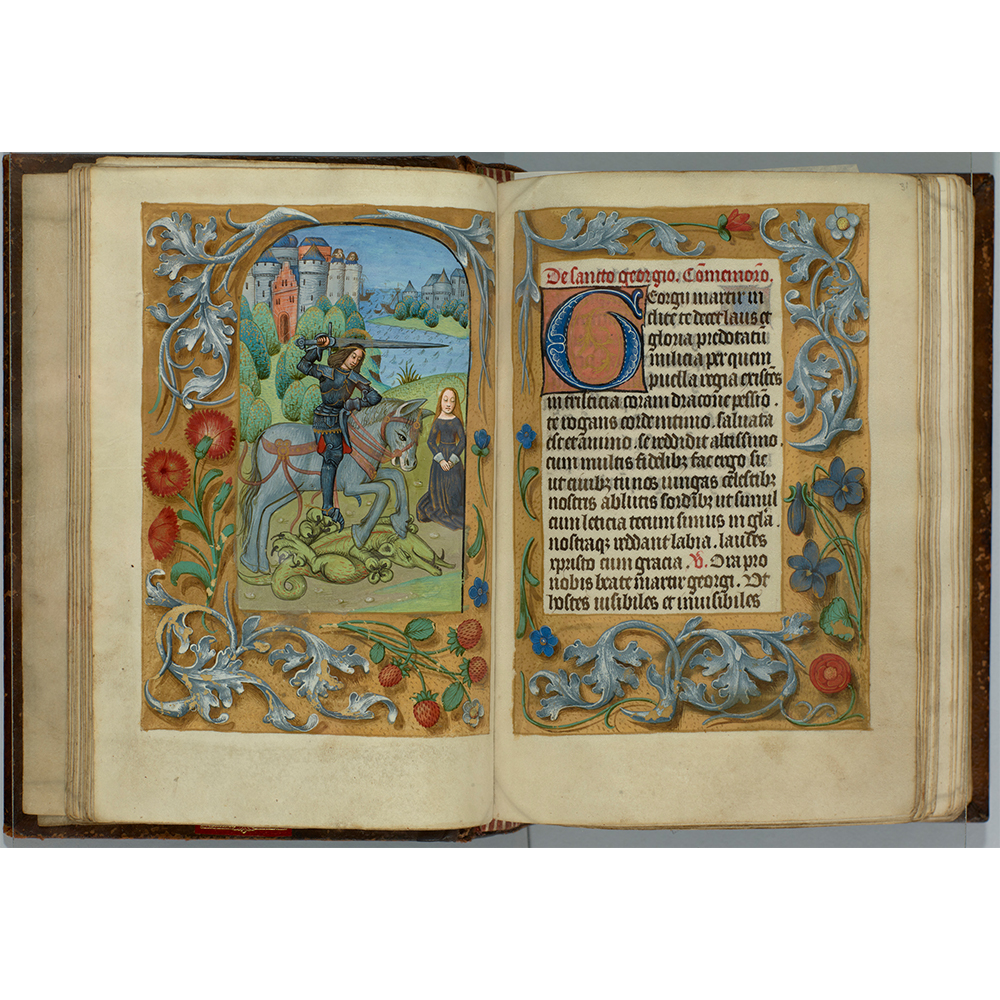Keble-Petre Hours

c.1485
Attributed to the Masters of Adolph of Cleves, and additional hands
Present-day Belgium (Ghent?)
Parchment, ink, paint, gold
Height of leaves: 8.2 in (20.9 cm); width of leaves: 5.6 in (14.2 cm)
Wyvern Collection, 0487; ff. 167v/168r
A traditional Book of Hours is a late-medieval compendium of prayers and devotional texts that guides the reader through religious practice. Based on monastic rituals, Books of Hours enabled the laity to enact a higher level of piety and devotion in their daily lives. The core text of these books consists of a series of prayers, readings, and psalms known as “The Hours of the Virgin.” This includes a set of eight prayers to be recited at regular intervals throughout the day, mimicking monastic devotional practice, and forging an intimate and direct relationship with God. The devotional goals of such a book were reinforced by the intimate scale and format of a book, which could be held in the hands of the worshipper. Illuminated miniatures interact with the text to encourage contemplation of narratives and events central to Christian belief. For those who could not read Latin, these images complemented the written text and provided another path of entry to devotional practice. (1) Many Books of Hours begin with a calendar of the holy feasts of the year, followed by illustrated texts relating to the Virgin Mary, the Crucifixion of Jesus, and various saints, but the Keble-Petre Hours has an unusual order. It begins with the calendar of the liturgical year, as typical, but then proceeds with the narratives of saints, the Crucifixion of Jesus, and then material related to the Virgin Mary.
Probably made in Ghent, the Keble- Petre Hours was owned in the early sixteenth century by an English couple, William Brown and his wife Alice Keble. It was used for prayer and as a repository for family records, including the births of their children, embodying Brown’s and Keble’s lives and relationships with God. (2) The Keble-Petre Hours is illuminated in great detail with the narratives of saints, the Virgin Mary and the Crucifixion of Christ. Embellishment of the book— notes written on the fly leaves, and in the margins of prayers and devotions—signifies a close interaction between the owner and God.
After the death of Alice Keble, the book was passed to her second husband, then to her daughter, and on through several generations. With each new owner, family records of births and marriages were added to the Keble-Petre Hours, embedding subsequent family members within a multi-generational instrument of devotion. Upon adding a name or portrait, the owner became integrated within the book for the rest of its existence, establishing through the physical object of the book and the ritual performance of its prayers intimate and enduring connections between the individual, the family, and the divine. While the book was not originally made for any particular individual, these markings by owners individualized the Book of Hours for the Keble family.
Amanda Banasiak, Class of 2020
Notes
- Wieck 2001.
- Reinburg 2019.